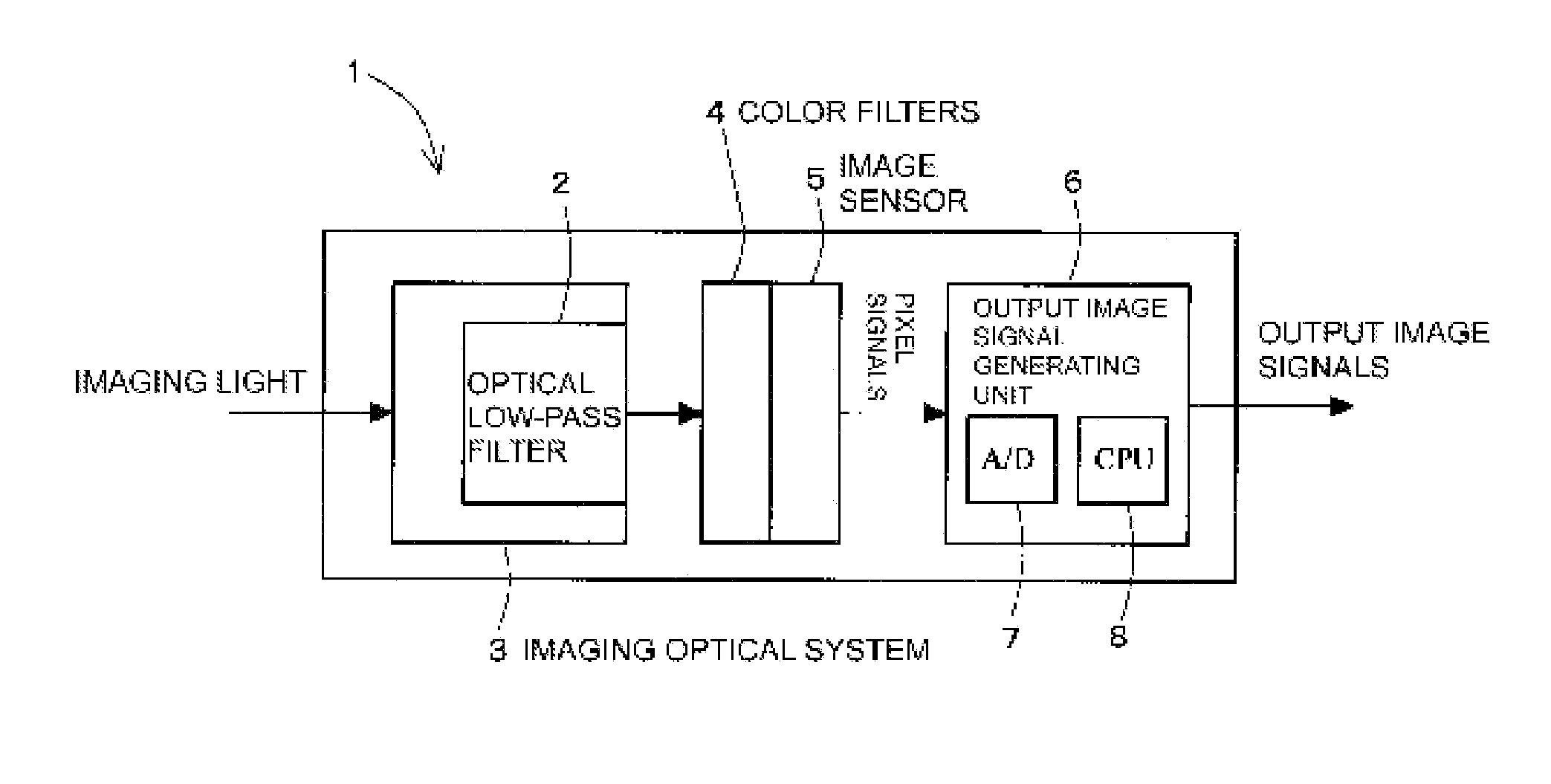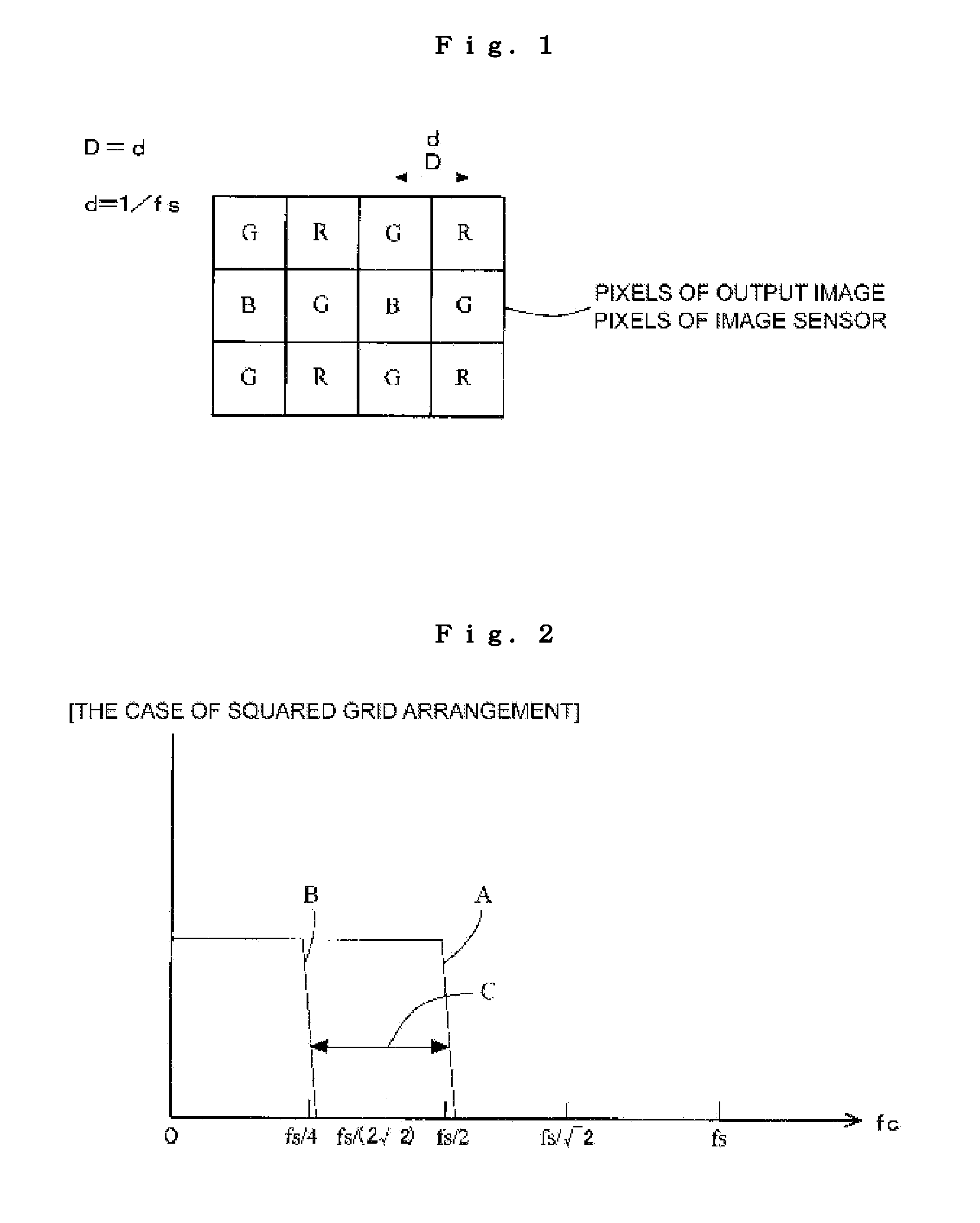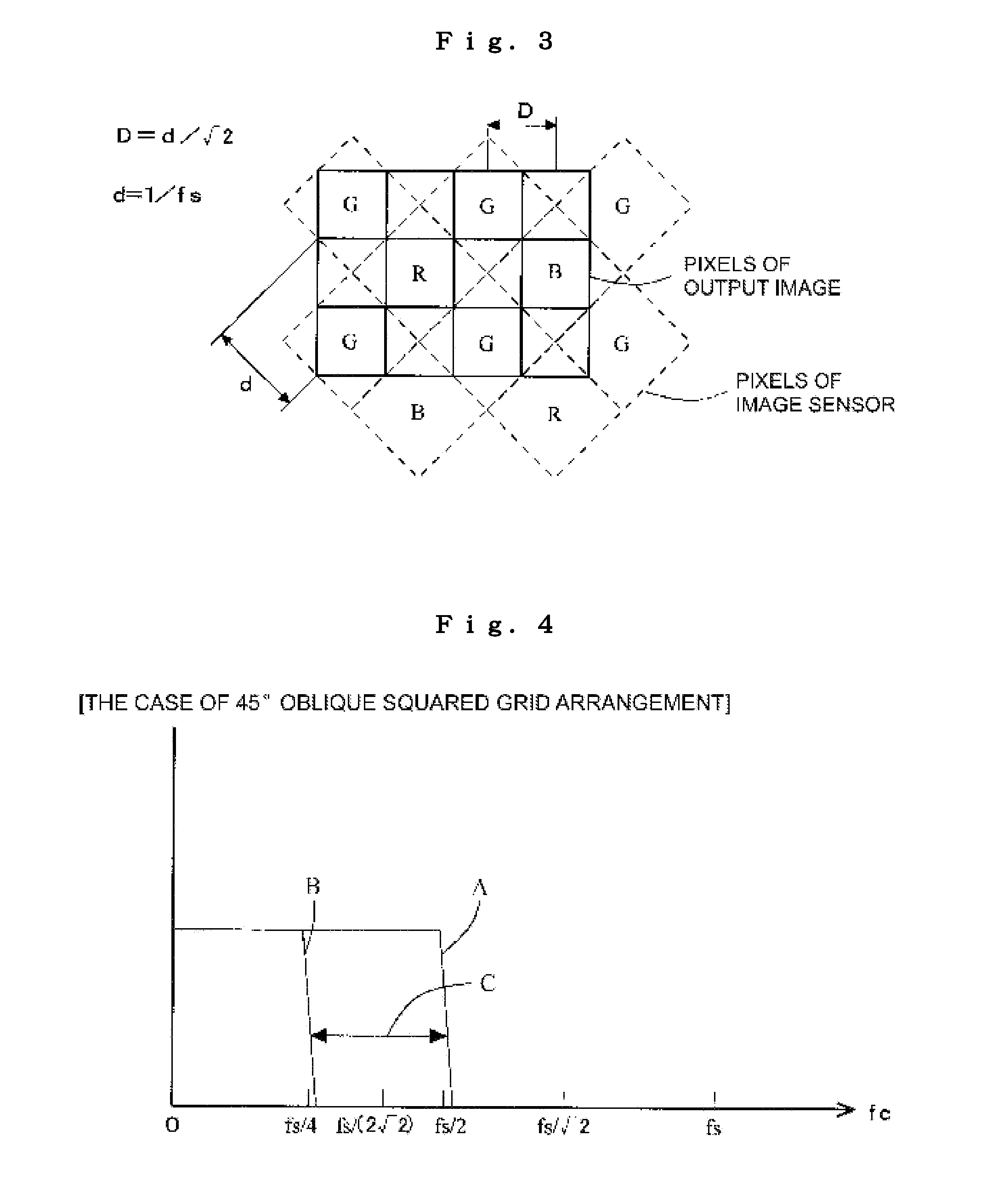Imaging device
a low-pass filter and image processing technology, applied in the field of image processing devices, can solve the problems of false colors, the cutoff frequency fc of the optical low-pass filter cannot be set lower than half the sampling frequency (nyquist frequency), and the accuracy of the exact color reproduction. reproducibility and resolution ability can be improved
- Summary
- Abstract
- Description
- Claims
- Application Information
AI Technical Summary
Benefits of technology
Problems solved by technology
Method used
Image
Examples
example 1
[0069] In the example 1, as shown in FIG. 14, the image sensor 5 was used in which pixels were arranged as a squared grid and the ratio k of the pixel pitch D of the output image to the pixel pitch d of the image sensor 5 was 1.5 (D=1.5d). As can be seen from FIG. 14, since 2.25 pixel signals were sampled for an output image signal for one pixel, N is 2.25.
example 2
[0070] In the example 2, as shown in FIG. 15, the image sensor 5 was used in which pixels were arranged as a squared grid and the ratio k of the pixel pitch D of the output image to the pixel pitch d of the image sensor 5 was 2 (D=2d). As can be seen from FIG. 15, since 4 pixel signals were sampled for an output image signal for one pixel, N is 4.
example 3
[0071] In the example 3, as shown in FIG. 16, the image sensor 5 was used in which pixels were arranged as a squared grid and the ratio k of the pixel pitch D of the output image to the pixel pitch d of the image sensor 5 was 4 (D=4d). As can be seen from FIG. 16, since 16 pixel signals were sampled for an output image signal for one pixel, N is 16.
PUM
 Login to View More
Login to View More Abstract
Description
Claims
Application Information
 Login to View More
Login to View More - R&D
- Intellectual Property
- Life Sciences
- Materials
- Tech Scout
- Unparalleled Data Quality
- Higher Quality Content
- 60% Fewer Hallucinations
Browse by: Latest US Patents, China's latest patents, Technical Efficacy Thesaurus, Application Domain, Technology Topic, Popular Technical Reports.
© 2025 PatSnap. All rights reserved.Legal|Privacy policy|Modern Slavery Act Transparency Statement|Sitemap|About US| Contact US: help@patsnap.com



